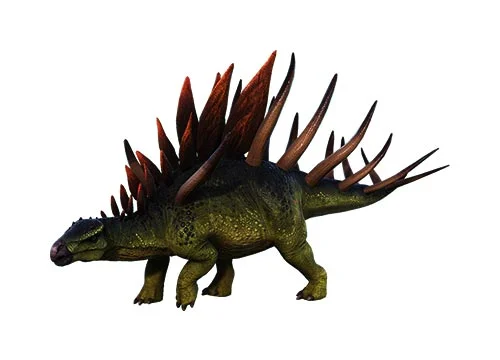Kentrosaurus (Spike lizard)

Ken-tro-saw-rus
Edwin Hennig – 1915
Herbivore
Estimated 4.5-5 meters long
Armoured Dinosaur
K. aethiopicus (type)
Africa, Tanzania, Tendaguru formation
Late Jurassic, 155-150 million years ago
Kentrosaurus Facts
Kentrosaurus is a genus of stegosaurian dinosaur that lived during the Late Jurassic period, about 155-150 million years ago. Its name, Kentrosaurus, means “spike lizard” in reference to the long spikes that run down its back and tail.
Kentrosaurus was a relatively small dinosaur, measuring around 4.5 meters (15 feet) in length and weighing around 1 ton. Like other stegosaurians, it had a distinctive body shape, with a small head, a heavily built body, and a row of bony plates along its back. The spikes on its tail were even longer than those on its back, measuring up to 70 centimeters (28 inches) in length.
Despite its small size, Kentrosaurus was a formidable herbivore. Its teeth were adapted for cropping and grinding plant material, and it likely fed on a variety of low-growing vegetation. Its bony plates and spikes may have served as defensive weapons against predators like Allosaurus, which were common in its environment.
The fossils of Kentrosaurus have been found in Tanzania and other parts of East Africa. They are often found in association with the fossils of other dinosaurs, including the long-necked sauropods Brachiosaurus and Giraffatitan. This suggests that Kentrosaurus may have lived in herds and shared its environment with a variety of other plant-eating dinosaurs.
Overall, Kentrosaurus is an important example of the diverse array of herbivorous dinosaurs that lived during the Late Jurassic period. Its distinctive body shape and defensive spikes make it a popular subject of scientific study and public fascination alike.



